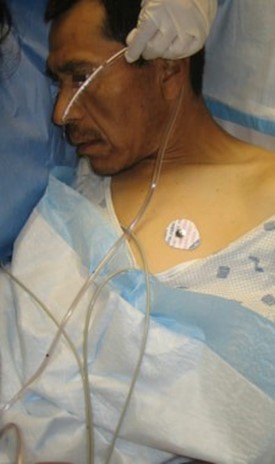A nurse receives a new prescription over the telephone from a client's provider. Which of the following actions should the nurse take first?
Write down the complete prescription.
Read back the prescription to the provider.
Document the prescription as a telephone prescription in the medical record.
Ensure that the provider signs the prescription.
The Correct Answer is A
When receiving a new prescription over the telephone from a client’s provider, the nurse should first write down the complete prescription to ensure that all the details are accurately recorded.
Choice B is wrong because reading back the prescription to the provider should be done after writing down the complete prescription.
Choice C is wrong because documenting the prescription as a telephone prescription in the medical record should be done after writing down the complete prescription and reading it back to the provider.
Choice D is wrong because ensuring that the provider signs the prescription should be done after writing down the complete prescription, reading it back to the provider, and documenting it in the medical record.
Nursing Test Bank
Naxlex Comprehensive Predictor Exams
Related Questions
Correct Answer is A
Explanation
When administering multiple medications via an NG tube, each medication should be prepared separately by crushing (if appropriate) and diluting it with sterile water. This method helps prevent drug interactions, ensures that medications are adequately dissolved, and minimizes the risk of clogging the tube.

Choice B is wrong because medications should not be combined with the formula in the feeding bag.
Choice C is wrong because the NG tube should be flushed with at least 15 to 30 mL of water before and after drug delivery.
Choice D is wrong because each medication should be administered separately when it is being given at the same time.
Correct Answer is C
Explanation
A.When mixing insulins, you should draw the short-acting insulin into the syringe first. This is done after injecting air into both vials (first into intermediate-acting, then into short-acting). Drawing intermediate-acting insulin first can contaminate the short-acting insulin vial with the longer-acting solution, which could alter the effectiveness of future doses.
B.Although this step is required when mixing insulins, it is not the first step. The nurse should first inject air into both vials to maintain vial pressure.
C.The nurse should inject air into the intermediate-acting insulin vial first because it helps prevent contamination and maintains the correct pressure within the vial. Intermediate-acting insulin, typically NPH (Neutral Protamine Hagedorn), is cloudy, and air injection into the vial allows for easy withdrawal later on without disrupting the order of mixing.
D.Injecting air into the short-acting insulin vial is necessary but should be done after injecting air into the intermediate-acting vial. By injecting air into both vials first, the nurse prevents a vacuum effect, which can make it difficult to draw up the insulin. After injecting air, the nurse can draw the short-acting insulin into the syringe before moving to the intermediate-acting insulin. This order minimizes the risk of contamination.
Whether you are a student looking to ace your exams or a practicing nurse seeking to enhance your expertise , our nursing education contents will empower you with the confidence and competence to make a difference in the lives of patients and become a respected leader in the healthcare field.
Visit Naxlex, invest in your future and unlock endless possibilities with our unparalleled nursing education contents today
Report Wrong Answer on the Current Question
Do you disagree with the answer? If yes, what is your expected answer? Explain.
Kindly be descriptive with the issue you are facing.
